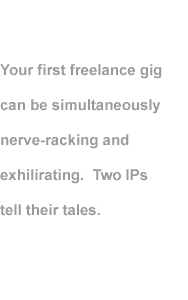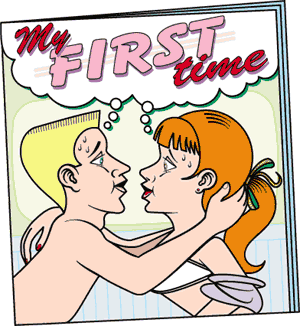 |
|
||||||||||||
 |
|
||||||||||||

|

|
|
By Scott Sawyer
|
Actor Stuart Cooper appeared in three films in the late 1960s, including The Dirty Dozen (1967), which starred Lee Marvin, Ernest Borgnine, Charles Bronson, and Telly Savalas. Cooper was making a good living as an actor, but he wanted to direct films more than he wanted to act in them. Problem was, he had neither directing experience nor the kind of bewitching star power that persuades skeptical studio executives to back a project. How, then, did Cooper land his first project? By 1969, Cooper was living in London and still supporting himself as an actor while contemplating his future in the movies. He was also an art lover and frequented the city's art galleries in his free time. At a gallery opening for paintings by Spanish artist Juan Genoves, Cooper fell into conversation with Genoves' agent. Cooper and the agent got along well, and Cooper bought a few paintings. ("I was still flush with cash from The Dirty Dozen," he says.) It was in the paintings that Cooper first envisioned the project that would become his directorial debut. "I had all these paintings on the walls of my garret in London," Cooper recalls. "I was looking at them all one night with a face full of good Scotch, and I got the idea that these pictures could be turned into a good movie." It would be a documentary -- not a plodding, chronological biography, but an enactment of Genoves' paintings and sculptures. It would be unorthodox, but serious-minded. Still, the idea was at best half the battle; getting a studio contract -- and a studio's money -- was the other. This Cooper aimed to get through another Genoves collector whom he'd met at a previous gallery opening, a man who, critically, also happened to be a vice president in the London office of MCA (now part of Universal Studios). Work it, Baby Cooper knew the MCA executive was his best hope. That much was clear. The challenge would be convincing him to pitch the project to the people who controlled the purse strings at MCA. Cooper's only credits as a director were for some experimental 16-millimeter films he'd made for fun and on the cheap; none had ever been shown in theaters. And no studio hands out directing jobs willy-nilly. "Even for people who have been around awhile, the first answer is almost always 'No,'" Cooper says. Cooper wasn't without hope. He was, after all, a working actor. To compensate for his inexperience, Cooper would simply have to make an exemplary pitch. Preparation would be the key. "I needed to show them precisely how I would make the movie. I wanted them to know that I had worked out how to make this picture, but I also had to sell them on the idea that it could have life as a product," Cooper says. The initial presentation included poster board blow-ups of the paintings and a 40-page script. Impressed but not completely sold, the VP told Cooper to submit a budget proposal. (Cooper refers to that part of the project as "shuffling through the dark of night.") "We had to collect photographs, and what we needed was scattered in galleries all over the world. I had to account for flying a transparency camera crew to Paris, Madrid, and New York, where a huge amount of the paintings were, and then back to London, where we would be doing our animation and editing," Cooper says. That was complicated, but once he had organized the crew's travel schedules, determining the number of shooting days -- which would enable him to approximate the costs of film and processing -- was relatively easy. Cooper returned to the VP's Hyde Park office with the budget, and four weeks later, A Test of Violence got rolling on a $50,000 budget. "Our fees were marginal," says Cooper. "I was a first-timer doing an artistic film as opposed to a knee-slapping, frolicking holiday film. Making the movie was the most important thing. At the end, we only had enough money left over for beer." The picture, however, went on to win first prize at 12 international film festivals, including competitions in Berlin, Moscow, and Venice, establishing Cooper as a director to be reckoned with. A new paying project followed quickly: the BBC invited Cooper to direct a one-hour documentary on the life and works of Australian painter Sidney Nolan. Before he had even written a script or drafted an outline, the BBC gave Cooper a budget three times that of A Test of Violence. A little success goes a long way. "Looking back on it," says Cooper, who's now in Germany editing a feature film called A Sordid Affair, "it always seems like a bit of a miracle." Max the Defender When contingency planner Max Ckonjevic started out as an IP in 1993, he faced a whole different set of problems from Cooper's. How much (or little) could he charge without giving off the repellent scent of desperation? What kind of a learning curve could he manage? Would blowing his first chance mean a certain return to kissing some corporate clown's behind? Ckonjevic designs contingency plans: protocols for the day the quiet guy in the corner cubicle goes berserk with a machete, a tornado descends, an earthquake erupts, fires flare, bombs fall. In other words, Ckonjevic identifies threats that might impede or stop a business' operations, and recommends ways for companies to reduce their exposure to calamity. Ironically, Ckonjevic became a business-continuity planner when he found himself without a job and without a plan. In 1992, after he was downsized by a Long Island consulting firm called Contingency Planning Research, Ckonjevic spent a year and a half looking for another full-time consulting job. He couldn't find one. "I wasn't prepared to be self-employed," he says, "but I didn't have many other options." A few weeks after Ckonjevic gave up his search for a full-time job and decided to open his own consultancy, a friend and fellow member of the Contingency Planning Exchange invited him to a luncheon sponsored by New York City's Chamber of Commerce. It was a mixer for private businesses and government agencies, and there Ckonjevic met the man who would become his first client. NYPD Blue An administrator from the New York City Police Department's employee benefits office let on that he needed an outside party to evaluate the department's ability to operate in case of a man-made or natural calamity. "It was high-risk," Ckonjevic says of the NYPD's office location. "Near the courthouse and the federal building. Things happen over there." Volatile democratic things -- demonstrations, rallies, sit-ins, events that can get out of hand. Ckonjevic saw his opportunity. Within a week, Ckonjevic had made a pitch to his NYPD connection: he would interview employees and examine the company's operations on-site; he would deliver a risk-assessment report, including a list of likely threats, assess dollar amounts of potential losses, and recommend controls to counter and minimize the effects of potential disruptions; and (drum roll, please) he would do it for cheap. "I told him that he was lucky because at that time there was a special deal, for that month only," Ckonjevic says. "He would get $3,300 of consulting services for $1,000. It closed the deal." The first half of the fee was payable up front, the second was due upon completion and approval of the report. "I wouldn't say I was desperate," says Ckonjevic, "but that first contract is difficult. I didn't want to miss the opportunity, and a little money is better than no money." As soon as he finished the NYPD job, Ckonjevic threw his energy into self-promotion. He made up flyers and distributed them at dozens of meetings and conferences hosted by a variety of businesses. He even made cold calls and targeted the banking and finance sections of the Yellow Pages. "I started with 'A' and worked my way through," he said. Neither produced speedy results. His backup plan was to register with several consultant placement agencies. "I figured that they already had the clients and the contacts, and it would be easier for them to find a match with my skill sets," Ckonjevic says. Eight months after Ckonjevic secured his first client, one of the agencies delivered the next, which has led to steady work for major corporations, including Arthur Andersen and IBM. "Large organizations like that don't accept calls from people who are not on their preferred vendor lists, and I certainly wasn't on any of those lists," says Ckonjevic. Many of the agencies he registered with, however, were preferred vendors with global clients, and Ckonjevic has since received assignments throughout the United States, Australia, and South America. Over the past two years, Ckonjevic has worked virtually non-stop as a Y2K contingency planner, specializing in international banks and stock trading houses. The First Time is Only the Beginning Clearly, the best possible conclusion to a first project is a second one, followed by an unending string of others. Still, the first paying project is the big one, the one that may actually establish you as a film director, a contingency planner, a toy maker, as whatever it is that you do. It's the great legitimizer. And once you're legit, you're too legit to quit. |
|
|
| ||
|
December 20, 1999 Primary Editor: Eric Gershon Illustrator: Lawrence San Production: Keith Gendel |
We'd love to hear your comments about this article! Scott Sawyer is a freelance writer who lives in Los Angeles, CA. If you like, we'd be happy to put you in touch with him, or with any of the other IPs named in this article. | |
| ||